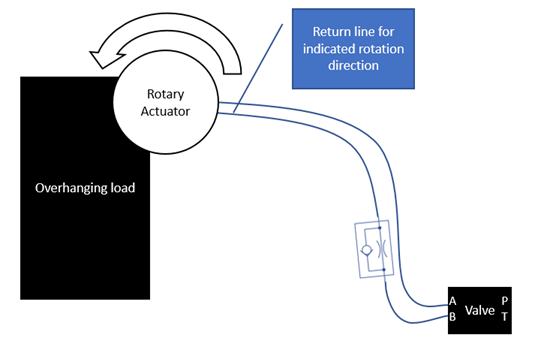Mounting valves remotely from actuators is always a bad idea. However, sometimes system design dictates mounting valves remotely from the actuators. Delta has had customers successfully control systems with more than 100 feet of hose between the valve and actuators.
Hydraulic tricks customers have using with some success:
- Install an orifice between the A port and the hose running to the actuator and the B port and hose running to the actuator.
- On a system with an overhanging load, a flow control with a check valve was used to generate more back pressure to better control the system.

For any system that requires hose, having the correct components can make control easier.
- Fast response, appropriately size valve
- High resolution position feedback
- Pressure transducers to A and B ports